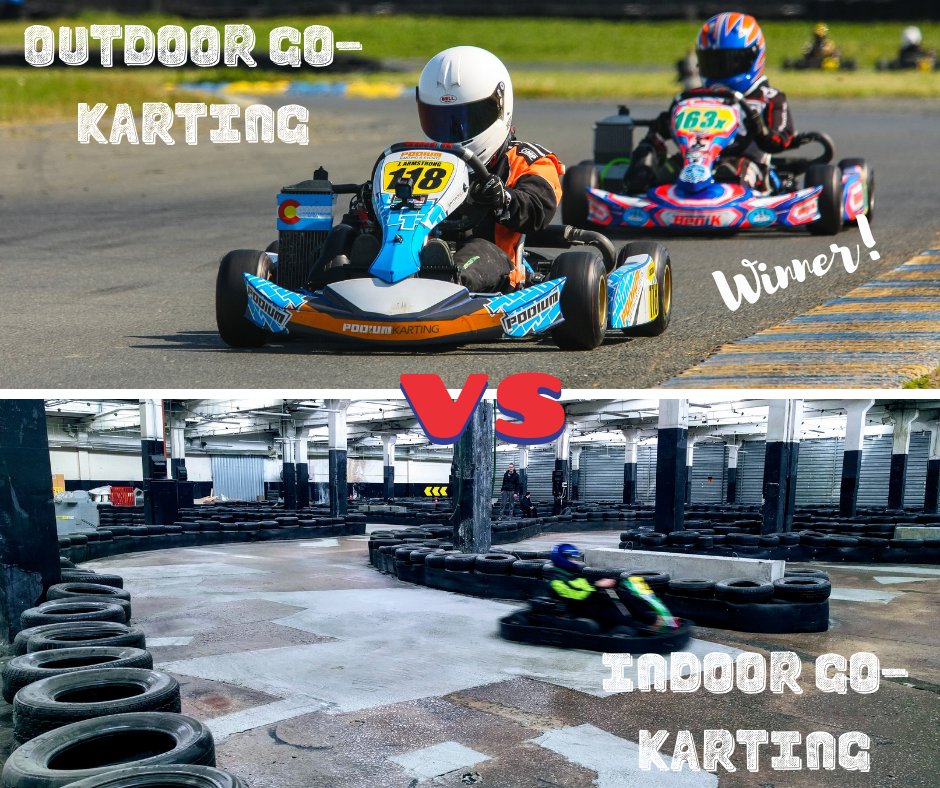
The Ultimate Debate: Outdoor vs. Indoor Go-Karting
Whether you’re a go-karting enthusiast or a beginner, you’ve probably wondered what the biggest differences between outdoor vs. indoor go-karting are; what pros and cons do each offer?
Well, today we’ll be laying it all out on the table for you so you can make that decision for yourself!
Outdoor Go-Karting Pros
With all this beautiful (albeit hot) weather we’ve been having here in Virginia Beach, there’s nothing better than whizzing around our outdoor go-karting tracks, listening to the roar of the engine and taking in the beautiful scenery.
Outdoor tracks are generally bigger than indoor tracks which give racers room to overtake other drivers. Because there’s enough room to move around and weave through the traffic, you have the ability to go faster on an outdoor go-karting track than you can indoors.
Possibly the greatest benefit of outdoor go-karting is the variety in tracks. With 11 tracks at Motorworld, you have your choice and if you’re not feeling one, there’s one right next to it that might be a little more up your speed. Indoor go-karting tracks generally only have one track so there’s not nearly as much choice in the matter and you can’t just go and pick a different track if you’re not satisfied with the main one.
Outdoor Go-Karting Cons
Just like with any outdoor activity, outdoor go-karting puts you at the mercy of the weather. Luckily, Motorworld still operates in the rain so all you’ll need is waterproof gear!
Indoor Go-Karting Pros
Indoor go-karting tracks are climate-controlled and are good for people who want a slow and easy ride: the tracks usually lack curves and turns while also moving at a much slower pace than outdoor tracks.
Indoor Go-Karting Cons
As the track is inside a building, indoor circuits are usually much smaller and slower than outdoor go-karting tracks. And not only are they smaller, but they are also usually narrower leaving less room to overtake; typically the place you start in is the same spot you end in because your passing opportunities are minimized. Plus, indoor circuits usually have fewer twists, turns, and corners making for a much less challenging ride.
